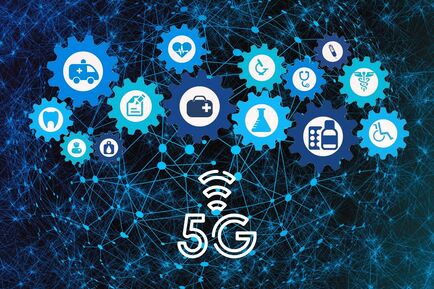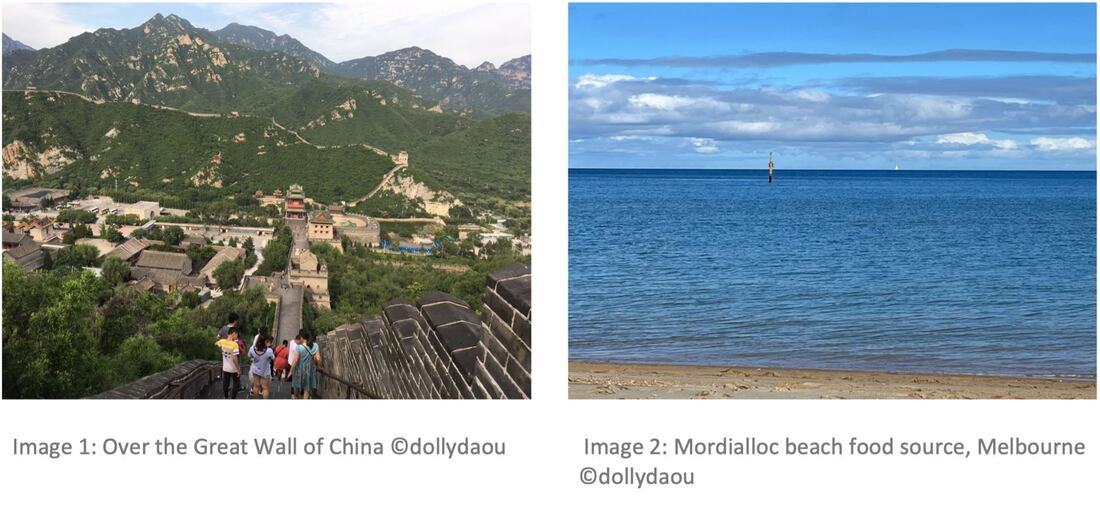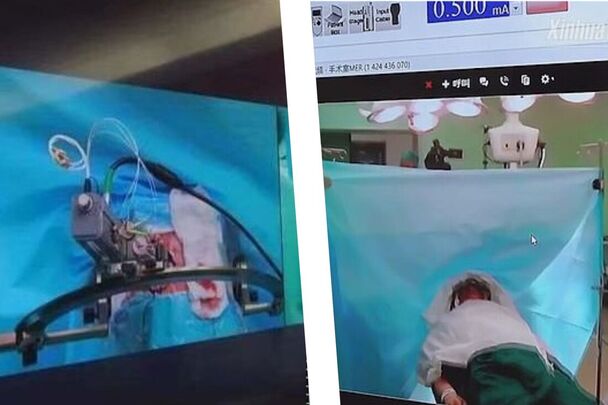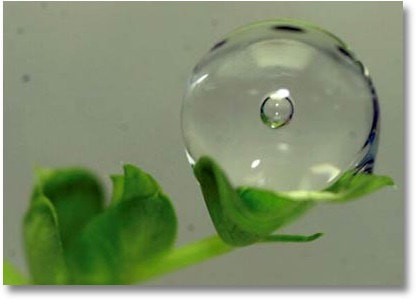Cosmic Conundrum: Unexplained Discovery at Interstellar Meteor Crash Site Sparks Scientific Intrigue18/8/2023
Author: Swapnil K Singh FRSA, IndiaUndergraduate: Astronomy Research & Mechanical Engineering - Astrophysicist of the future! In an extraordinary scientific expedition, researchers embarked on a quest to investigate remnants of the first recognised interstellar meteor, IM1. As they explored the crash site, an astonishing revelation emerged, challenging our understanding of cosmic phenomena and hinting at the possibility of extraterrestrial technology. During their initial examination of the crash site, the team encountered a considerable amount of volcanic dust particles on their magnetic sled. These tiny particles, measuring less than a tenth of a millimetre, were diligently removed from the sled's magnets using a painter's brush. However, it was the presence of a peculiar wire, labelled IS1–2, that truly astonished the researchers. Despite being dragged through the ocean water by the ship Silver Star, the wire remained firmly attached to one of the magnets. The scientists proposed that the volcanic magnetic particles acted as a magnet, effectively holding the wire in place against the force of the ocean current. Driven by curiosity, Ryan Weed and Jeff Wynn conducted an in-depth analysis of the wire's composition. Using an X-ray fluorescence analyser manufactured by Bruker, they compared its composition to known human-made alloys. The results revealed significant peaks in manganese (Mn) and platinum (Pt) on the periodic table. Further investigation unveiled that the wire was composed of a manganese-platinum alloy (MnPt). However, the relative abundance of manganese and platinum in IS1–2 diverged significantly from the composition of MnPt alloys typically used in laboratory non-corroding electrodes. This perplexing deviation suggested the possibility of an origin beyond our world.
Author: Tomas DucaiBiology (microbiology/genetics) graduate, University of Vienna - Space (medicine) enthusiast "For most people, this is as close to being an astronaut, as you’ll ever get. It’s leaving planet Earth behind and entering an alien world.“ - Mary Frances Emmons - Editor-in-chief Scuba Diving, Sport Diver & The Undersea Journal magazines Mary Frances Emmons puts into words the indescribable atmosphere of scuba diving in which the boundaries become blurred between Earth and the sky above, or at least, to be more precise, the depths of space. It is this mixture of feelings that I want to experience – diving into the element of water, which is essential for life and where physical disabilities may not matter. I have been active in the world of space exploration for over a year now and am truly interested in promoting inclusion in the space sciences and analog space missions. I have been lucky enough to meet a lot of respected people and professionals doing amazing work with great passion in their respective fields, and they have also been keen to help and support me to realize my dreams A particular person who has shaped my dreams in concrete terms is Slovakia’s one and only aquanaut (underwater analog astronaut) and Chief Scientific Officer of the Hydronaut Project (unique underwater lab serving as a research facility for survival training in limited/extreme environments) - Miroslav Rozložník. Miro is an experienced scuba-dive instructor, who I met in Prague at an international analog astronaut community event. He offered to help me experience the unique underwater atmosphere through introducing me to the world of scuba-diving, a truly cherished offer that I gratefully accepted! At the same time, I knew that having a basic introduction to scuba diving may also enhance my chances of being selected as one of the three analog parastronauts for upcoming analog missions at the LunAres analog research station in Poland, especially if underwater mission experiments are being considered.
Author: Dr Dolly DaouInternational expert in design business innovation and strategies - International experience in design pedagogy/research, leading philanthropic associations and higher education programs and community projects in Australia, Asia, Europe and in the Middle East. (Visit: https://dollydaou.org/) I was inspired to write this blog in response to a post I saw on social media, where during an interview, one of the attendants asked: Who invented gravity and why do we need it? To the best of the attendant’s knowledge gravity was invented by Isaac Newton. These simple yet complex questions demonstrate the fragility of our knowledge and appreciation of gravity and reveal the inter-connection of these questions to each other. To be clear the reflections on gravity in this blog are not scientific, rather I am exploring the significance of gravity in our everyday as a design researcher. Throughout history the chain reaction of scientific explorations by Aristotle, to Bruno, Galileo, Kepler, Newton, much later Einstein, and then Hawking led to the discovery and adaptation of the theory of gravity. Although Newton could not explain the origin of gravity he did adapt Johannes Kepler’s law of gravitational theory, invented calculus and gave this force its name: gravity. Through this exploration, I open the scope of discussion for other disciplines to examine the power of this invisible force in our universe. Through interior and food design I demonstrate how gravity controls our daily lives from lifting an ordinary object to launching a rocket into space or designing a sustainable food system. We rely on gravitational forces of the planets during our interaction with our environment, especially in the food system gravity plays an integral part in the production, distribution, manufacturing and consumption of food. The images below of the Chinese mountains and Australian ocean show how the food system on our planet Earth is connected through a force that holds everything together called: gravity. If we understand gravity, we understand the story of creation of the universe, that grounds the human existence and conditions our neurology and physiology. We under-estimated the value of gravity in our everyday, which usually goes un-noticed. The complexity of questioning the origin and benefits of gravity lies in the simplicity of these questions; in the presumption that we should all know the answers. These questions are especially relevant now during our current exploration to the extra-terrestrial inhabitation with lower or zero-gravity environments, which reveal the significance of gravity as a un-negotiable part of our everyday life.
Author: Prof K GanapathyDirector Apollo Telemedicine Networking Foundation, Apollo Tele Health Services | Distinguished Visiting Professor IIT Kanpur | Distinguished Professor The Tamilnadu Dr MGR Medical University | Emeritus Professor National Academy of Medical Sciences  5G is the fifth generation of wireless communication technology, promising faster data transfer speeds, lower latency (round trip latency >10 milliseconds), increased network capacity (1 million devices per sq km), 99.999% network reliability and battery life of up to 10 years for IoT devices. There is considerable hype in the media that deployment of 5G will revolutionize healthcare by enabling new medical applications and improving existing ones. Using Edge computing, 5G Data can be processed closer to where it is generated. IoMT (Internet of Medical Things) devices generate huge amounts of data. Cloud computing can provide the necessary infrastructure to process and analyze this data. Faster transmission of data will enable more efficient storage in the cloud. Accessing more bandwidth and computing resources, and providing infrastructure to enable scalability will now be less problematic. No doubt clarity of images transmitted will be better and the immersive experience in video conferencing will be an all-time high. Mammograms, CT, MRI, and ultrasound images generate large amounts of data. High-speed transfer and processing will save a few minutes. Onboard cameras, camera-based Headgear, and ‘Body Cams’ for paramedics can transmit patient data to hospitals in real-time using ultra-fast and low-latency 5G connected ambulances, with medical equipment, patient monitoring applications and telemetry devices that ensure excellent pre-hospital management. 5G can facilitate real-time control of medical robots, enabling precise and safe interventions in performing complex procedures. 5G enables faster and more efficient data transfer, facilitating clinical trials and drug development, as these require the collection of large amounts of data from multiple sources.
Author: Lukasz WilczynskiCo-founder European Space Foundation | Originator of the European Rover Challenge project. Experienced dot-connector and communication consultant specialising in technology and innovation.
This interview first featured on the European Space Foundation website
Author: Dr. Paul ZilbermanMedical Doctor, Anaesthetist, Hadassah Medical Center Jerusalem, Israel This article addresses the notion of buoyancy and why drinking beer in space (the ISS usually orbits in the thermosphere), or any carbonated drink for that matter, does not produce the known tingling sensation we can feel in our noses here on Earth. So let’s first briefly consider what is buoyancy? In simple terms, whenever an object is put into a fluid there are several forces that act upon it. The liquid exerts a force from the bottom upwards that tries to push that object up. Then there is the liquid force itself, let’s call it weight, that pushes an object downwards. However, because the liquid pressure increases the deeper you go down into the fluid, there will always be an upwards force bigger than the downward force. This can be explained by looking at the formula for hydrostatic pressure: Hydrostatic pressure = pgh In this formula, p is the density of the liquid, g is the gravitational force (9.81 m/s2) and h is the height of the fluid column measured from the surface. Keeping all the other parameters of the formula constant, the "h" at the bottom of a submerged object will be higher than the one at its top. But we also have here another component: the "g". Well, there is practically no "g" in space, unless we artificially produce it. So, in this case, all the objects inserted or included into a fluid will just stay there. Of course, there are many other factors that play a role here, for example the superficial tension of the fluids etc., however, for the sake of simplicity I am considering here only the buoyancy. So, nothing happens with the CO2 bubbles inside the fluid because they are no lighter than the fluid that surrounds them, perhaps looking something like in this photo: This not mixing between the fluid and gases within creates a hard enough life for anyone who would like to enjoy a beer in space (hypothetically, at least as alcohol consumption is not permitted on the ISS), but let's also not forget the cabin temperature of roughly 20 degrees Celsius, which is way too high to enjoy an ice cold beer. If you want to cool it a bit forget leaving it outside too - just take a look at what the temperatures are "outside", unless of course you want to lick your beer like an ice-cream!
InnovaSpace Journal Club #1 Report: Jugular Venous Blood Flow Stasis & Thrombosis During Spaceflight4/2/2023
Author: Lucas RehnbergNHS Doctor - Anaesthetics & Intensive Care | MSc Space Physiology & Health Extremely pleased to report on the 1st InnovaSpace Journal Club meeting that had the participation of a very international audience, with attendees from Belgium, Brazil, India, Israel, Italy, Romania, and UK! Thank you to all those who attended and look forward to future talks and discussions. For those who couldn’t attend, or are interested in the Space Journal Club, I have created a ‘one page’ summary of the paper we discussed. I have also added in the discussion points raised after the critical appraisal of the paper, together with links to additional reading material for anyone wishing to learn more. PAPER PRESENTED & DISCUSSED: HEADLINE: After 50+ years of spaceflight, the first documented venous thrombus in an astronaut identified - highlighting a new pathology, not previously diagnosed in astronauts. Who are the authors?
Experts in this field from several space agencies => NASA, IBMP (Russia), ESA Funding => NASA, under the Human research program. Part of the multi-institution international fluid shifts study. What is interesting about this paper/ Why would the medical space community be interested in this? New pathology, not diagnosed before. Potentially massive implications for future long duration missions. LBNP could potentially be a countermeasure to enhance venous blood flow or improve cerebral venous outflow. The research question. Loss of hydrostatic gradient and variation on Earth, sustained fluid redistribution. Effect on cerebral venous drainage/blood flow. Possible mechanism linked to SANS? Increased risk of clot formation due to static/retrograde flow? Aims:
Why is this research question important? Static/stagnant flow can predispose individuals to thrombus formation. Long lasting effects of thrombi for astronauts, potentially affecting crew performance (i.e. risk of anticoagulation, emboli, then leading to reduced performance affecting the crew and mission). The study design. Primary research => prospective cohort study (follow a similar patient group over time, comparing a particular outcome). Subjects were 11 astronauts, on the ISS. Method: Ultrasonographic assessment of left IJV (IJV are main conduits of cerebral drainage) - pre flight (3 positions, seated, supine & head down tilt) - at approximately D50 and D150 of spaceflight - with and without LBNP (approx the same days, Russian Chibis-M LBNP) Authors: Space Crew Group MembersSibsankar Palit, Tomas Ducai, Dhanusshya Raghu, and Raluca Papacocea “If people sat outside and looked at the stars each night, I’ll bet they’d live a lot differently…….How so?.......... Well, when you look into infinity, you realise that there are more important things than what people do all day.” Humans are planning to one day build settlements beyond Earth, although it should be noted that, currently, the total number of humans who have ventured beyond Earth (astronauts) is minuscule in comparison to the 8 billion global population. There is still a lot of work to be done. We are still not sure if space travel will be possible for everyone in our respective lifetimes, but in the meantime, there are several cosmic events that we can all witness from this blue dot on which we live. These include eclipses, meteor showers, etc. that occur at specific times, and give us a sense of belonging to the cosmos! So, we should try not to miss these cosmic events if at all possible. There are astronomy clubs and science museums that can be visited, or sometimes we can even view these events online using applications like Stellarium or Youtube, etc. Outreach activities at the Birla Industrial & Technological Museum, Kolkata (BITM, Kolkata)
Images Credit: Rounak Saha & Astronomy Club, BITM, Kolkata, WB, India A few members of the InnovaSpace Space Crew working group have actively engaged in observing two vital cosmic events that took place toward the end of 2022 - the Partial Solar Eclipse (25.10.2022) and Total Lunar Eclipse (08.11.2022). Below are a few snapshots of the recent eclipses. Author: Swapnil K SinghUndergraduate: Astronomy Research & Mechanical Engineering - Astrophysicist of the future! Albert Einstein gave the theory of relativity and because of him we know how gravity works and also the nature of space-time. With the help of the theory of relativity, we can say that gravity warps space-time fabric and that's how we feel the effect of gravity. Later, in year 1921, German scientist Theodor Kaluza came up with an idea that if the force of gravity warps space-time, then other forces like electromagnetic or nuclear forces also warp space-time. However, we know that's not true, so then Kaluza thought that maybe these forces do not warp the space-time of this dimension but warp the space of other dimensions, and so, the theory of other dimensions (string theory) came into existence. The Kaluza–Klein theory (KK theory) is a classical unified field theory of gravitation and electromagnetism built around the idea of a fifth dimension beyond the common 4D of space and time, and considered an important precursor to string theory. String theory predicts that all objects in our universe are composed of vibrating filaments (and membranes) of energy. It proposes that subatomic particles are sub-sub-subatomic strings. If we zoom in on the particles closely enough, what we usually think of as little billiard balls reveal themselves to be tiny loops or lengths of a more primitive material. These strings vibrate like miniature guitar strings, and each type of particle corresponds to a string playing a certain pitch. These strings came in two forms — closed strings and open strings. An open string has ends that don’t touch each other, while a closed string is a loop with no open end.
Author: Dr. Paul Zilberman Medical Doctor, Anaesthetist, Hadassah Medical Center Jerusalem, Israel Recently, more and more space dreamers and serious scientists foresee a human travelling to Mars. The closest planet to us in a centre to periphery direction from the Sun, Mars is still at 86,362 million km distance. Hmmmm… It is said that in similar conditions and with similar materials, the resultant product will usually look the same. Well, Mars is somehow considered a terrestrial planet. For illustration, I bring two pictures to your attention - similar, but with evident differences. Both show sunrise, but one is from Mitzpe Ramon in Southern Israel, while the other is from Mars. Obviously, the second image was not taken by me! With a bit of imagination, we can compare both images - would you take your family at the weekend for a grill (BBQ)? In both places? A grill? Well… let’s see what we need. Here on Earth, we know. But what do we have on Mars? Minimum temperature of -110 degrees Centigrade - too cold to eat outside. Maximum temperature is +35 degrees Centigrade. That’s ok, a bit like Mitzpe Ramon. So, let’s do the grill. But something’s missing! Yes, for fire we need some oxygen. The oxygen level on Mars is 0.2%, roughly 1/100 of what we have on Earth. Hmm… definitely not enough. And for a good and tasty grill you need to stay next to it and watch the meat, flip it from time to time. This is difficult too as the gravity on Mars is 3.721 m/s2, roughly 1/3 of that on Earth. Kinda floating a bit, isn’t it… ?
So, until we are able to have a grill on Mars, provided we can transport enough meat there and keep it edible, let’s enjoy a traditional and classic one in our own backyard. Enjoy! But…look to the skies from time to time…You will see Mars with the naked eye. BTW, we’ve started producing artificial meat over here… |
Welcometo the InnovaSpace Knowledge Station Categories
All
|
UK Office: 88 Tideslea Path, London, SE280LZ
Privacy Policy I Terms & Conditions
© 2024 InnovaSpace, All Rights Reserved























 RSS Feed
RSS Feed